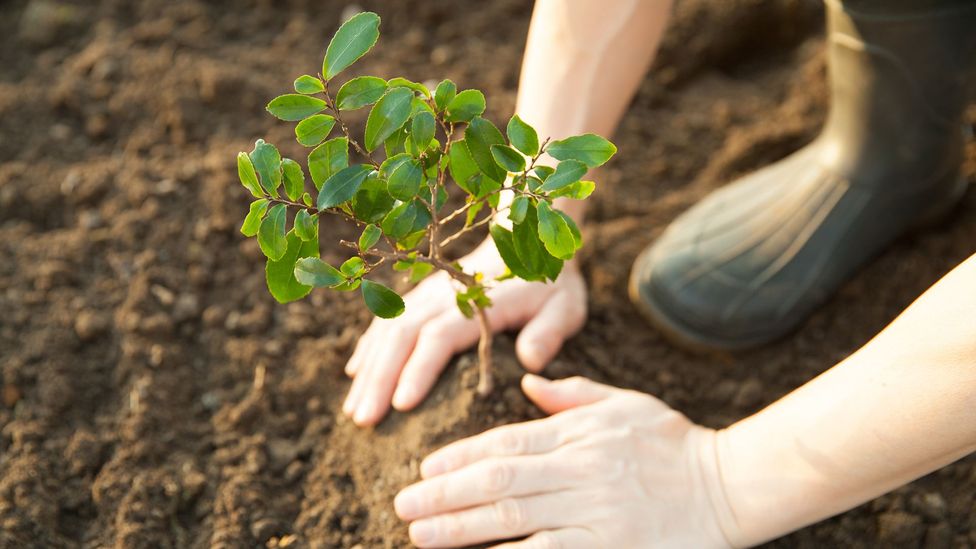Fitness Rush Future
Discover how Fitness Rush environmental and sustainability initiatives are changing our planet for the better.

As part of our Plant a Tree for Me project, we have pledged to plant 1 new tree for each new participant we enroll. This is to recognise the journey individuals start and replicate new begins in tree form. Trees are an overlooked part of our society and possess the ability to make our world a richer, greener, and more beautiful place. Our initiative creates a host of benefits for the environment and our communities. Plant a Tree for Me, our community tree planting scheme looks to enrich our landscapes, release oxygen into the air and reduce our carbon footprint so the future generations can live in a safer and more sustainable world.
Plant a Tree for Me – Our Mission from 2023
During 2023, we plan to plant around 200 trees with our partners, The Woodland Trust. From green spaces at schools to community gardens, we will be busy throughout Cambridgeshire and beyond, in rural and urban areas. This represents a tree for every new fitness journey started with us.
1. Fighting the climate crisis
Trees seem to be an underrated source of vitality, in more ways than one! A unique quality is their ability to become carbon sponges. They absorb carbon by taking it from the air and concealing it in their roots and bark for their entire lifetime.
One tree can absorb as much as 22kg of carbon each year and consume 1 ton of the element by the time it reaches the ripe old age of 40. Over the course a year, an acre of trees can absorb the equivalent carbon quantity compared to driving 26,000 miles in a car.
2. Air purity
Trees do more than eat carbon – they also create oxygen. It is known that one tree can produce enough oxygen for four up to people!
They also purify the air alongside enriching it. Trees can absorb pollutant gases such as nitrogen oxides, ozone, ammonia and sulfur dioxide. This explains why a walk through a forest makes us feel so good.
Considering trees in towns and cities, they can combat the effects of air pollution, if enough are planted. With over 3 million individuals dying worldwide each year from illnesses created by air pollution, that’s potentially an effective solution. In the UK alone, the removal of pollution by vegetation is estimated to save around £1 billion in the avoidance of ill health costs, with 27,800 fewer life years lost and 1,900 fewer premature deaths anually.
3. Lowering the air temperature
Trees are sometimes referred to as nature’s air conditioners. Largely built-up urban areas can store excess heat, so trees are planted in cities to aid with temperature control.
There are two different ways that trees can cool the air. Firstly, a tree’s branches and leaves act like a parasol, blocking out up to 90% of the sun’s heat and cooling the ground around it. Secondly, they use a process called evapotranspiration to stop radiation from the sun before it reaches the ground.
When the sun’s rays hit a tree’s surface, it causes water to evaporate from the leaves which creates a cooling effect that can lower the surrounding air temperature by several degrees. Just like human’s, trees ‘sweat’ when they’re hot which also plays a role in regulating our environmental temperature.
4. Prevent flooding
Similar to most living things, trees need water to survive, and they drink a lot. In one day, a large tree can consume approximately 100 gallons of water. That helps limit flooding from heavy rain, especially in low-lying places like river plains.
This helps the ground absorb excess water, and by bonding soil with their roots, trees can also reduce the risk of erosion and damage to properties from flash flooding. Considering extreme weather and the risk of flooding on the rise, the importance of more trees becomes even greater.
5. Sustain wildlife
With many species of animals and wildlife under increasing threat from climate change, home grown trees play a vital role in supporting life. Trees create habitats for all kinds of wildlife – from squirrels, bees, owls and woodpeckers to name a few.
Trees add biodiversity to communities by becoming both a food source and a habitat for wildlife. Planting a single tree could raise the number of bird species from near zero to 80 in a short-term period, and in larger numbers they can attract even more endangered species.
This is also important when you consider the value of wildlife for humans too. Whether its pollinating plants or eating pests like mosquitoes and mice, trees support wildlife’s survival, and encourages it to thrive.
6. Boost health!
Trees are proven to do almost anything from helping lower stress levels to raising property values, and even fighting crime. Not all superheroes wear capes.
Studies show that patients with views of trees heal faster and with fewer complications. Children with ADHD show reduced symptoms with access to nature, and exposure to trees has also been proven to reduce mental fatigue and help concentration.
As for crime, violent and antisocial behaviour has been shown to be more common in communities without trees. It is believed that trees and landscaping have a calming effect which helps reduce levels of aggression and fear.
When we’re exposed to certain chemicals released by trees, research shows benefits from reduced blood pressure and anxiety to increased pain threshold, and even an increase of anti-cancer proteins.
7. Improve soil quality
Considering agriculture, our trees play a vital role. They can reduce soil erosion, improve fertility and give soil extra moisture. Fallen tree leaves also turn into important nutrients for tree growth, and aid with microorganism development.
Trees also help with clearing up soil pollutants. One maple tree can remove 60 milligrams of cadmium, 140 mg of chromium and 5,200 mg of lead from the soil each year.
Studies show that farm runoffs contain up to 88 percent less nitrate and 76 percent less phosphorus after flowing through forestry.
8. Lowering energy bills
One of the most welcome benefits is the reduction in energy bills.
When trees are planted strategically, they supply shade in the summer, reducing the need for fans or air-conditioning. For the best effects, trees should be planting to shade the east and west sides of properties.
Furthermore, in winter months, trees act as windbreakers from adverse weather. Evergreen trees planted on the north side of homes and shrubs planted around foundations can reduce the cooling effects of winter winds
It has been estimated that by planting trees and shrubs, you can save up to 25 percent off your energy bills.
Contact us today and let's get started
.For more information or to get started on your new health and fitness journey with Fitness Rush, call Liam on 01487 208150 or use our online contact form to get in touch about our services…
